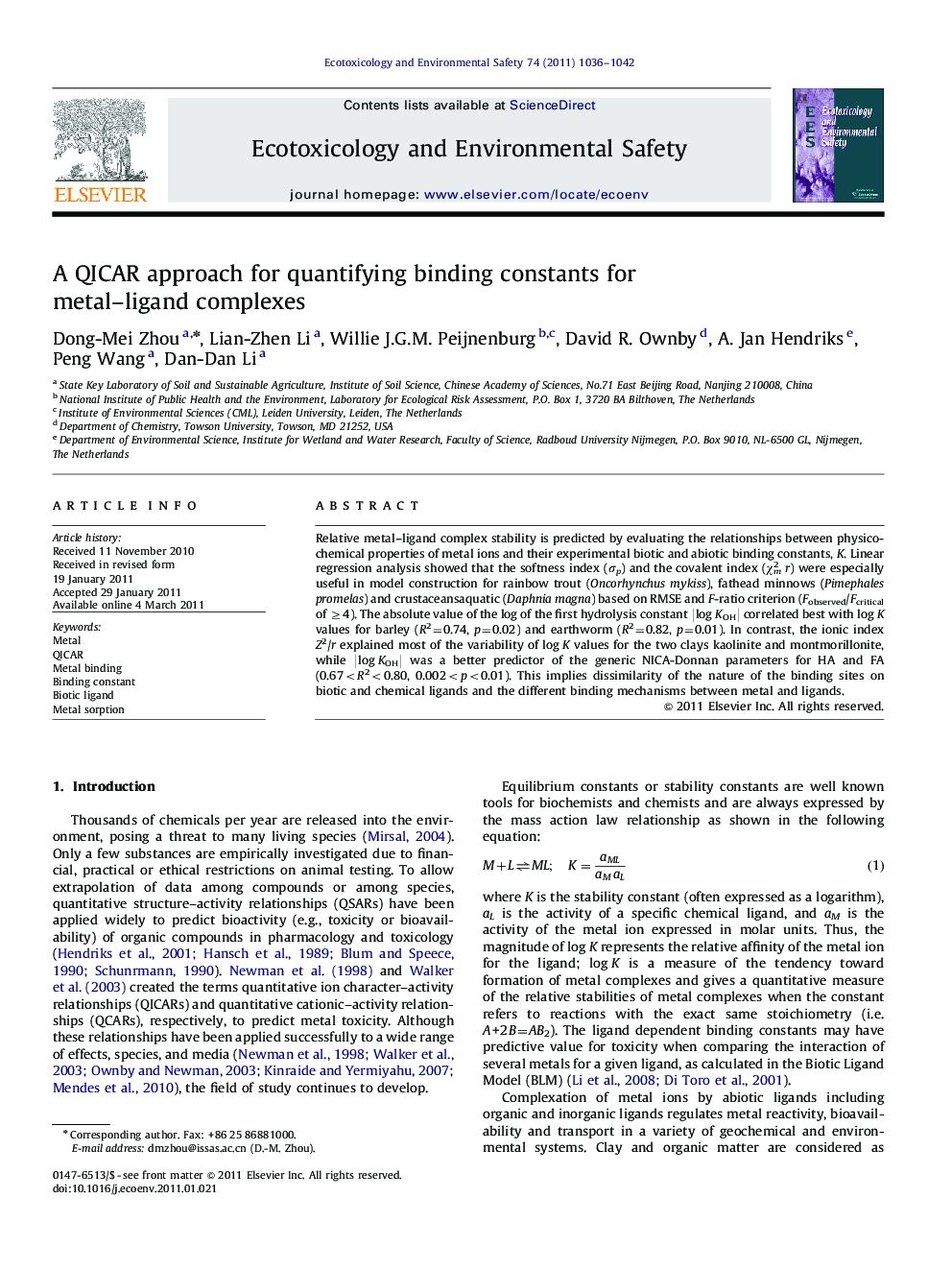| Article ID | Journal | Published Year | Pages | File Type |
|---|---|---|---|---|
| 4421493 | Ecotoxicology and Environmental Safety | 2011 | 7 Pages |
Relative metal–ligand complex stability is predicted by evaluating the relationships between physicochemical properties of metal ions and their experimental biotic and abiotic binding constants, K. Linear regression analysis showed that the softness index (σp) and the covalent index (χ2mr) were especially useful in model construction for rainbow trout (Oncorhynchus mykiss), fathead minnows (Pimephales promelas) and crustaceansaquatic (Daphnia magna) based on RMSE and F-ratio criterion (Fobserved/Fcritical of ≥4). The absolute value of the log of the first hydrolysis constant |log KOH| correlated best with log K values for barley (R2=0.74, p=0.02) and earthworm (R2=0.82, p=0.01). In contrast, the ionic index Z2/r explained most of the variability of log K values for the two clays kaolinite and montmorillonite, while |log KOH| was a better predictor of the generic NICA-Donnan parameters for HA and FA (0.67
